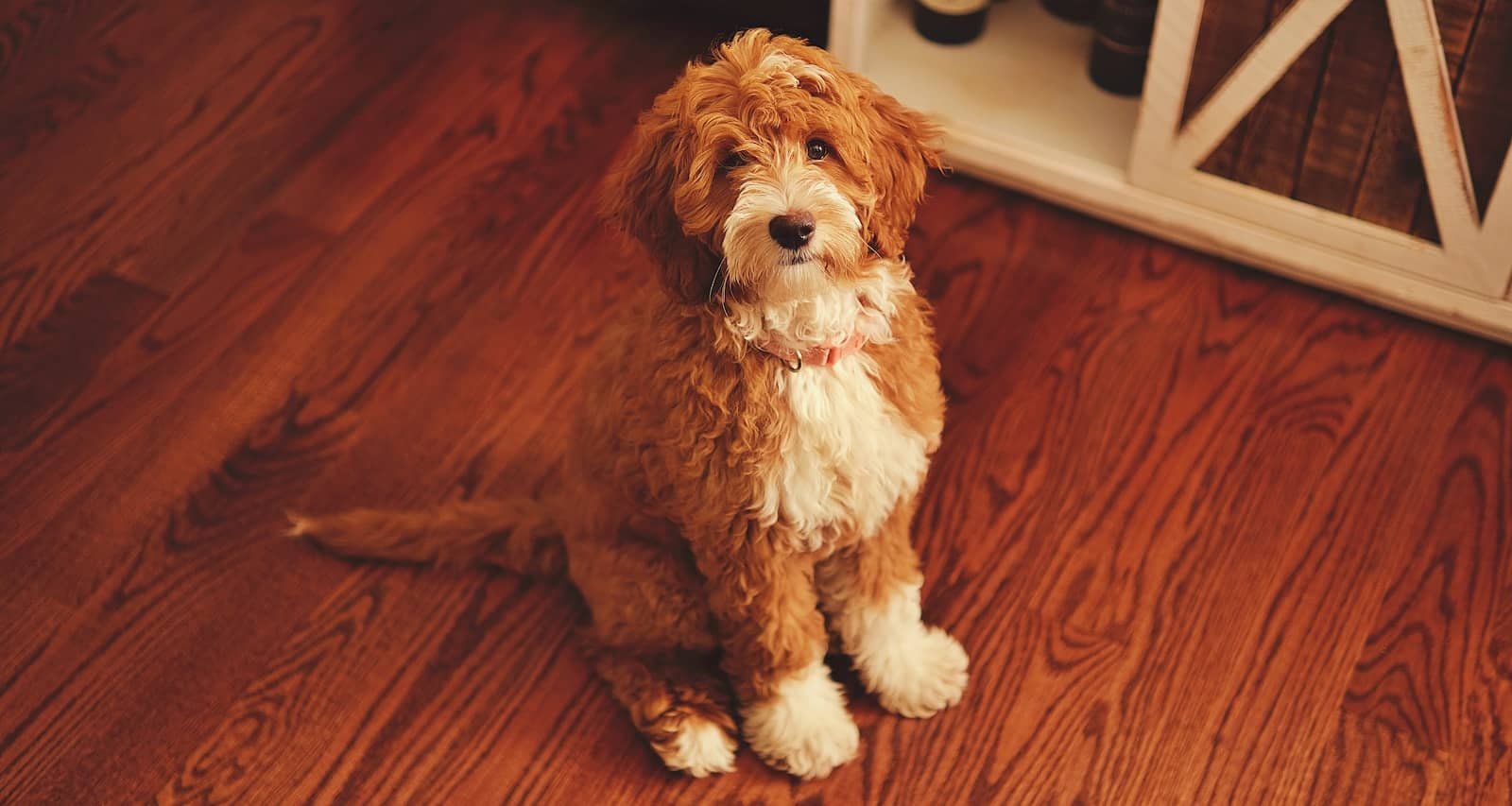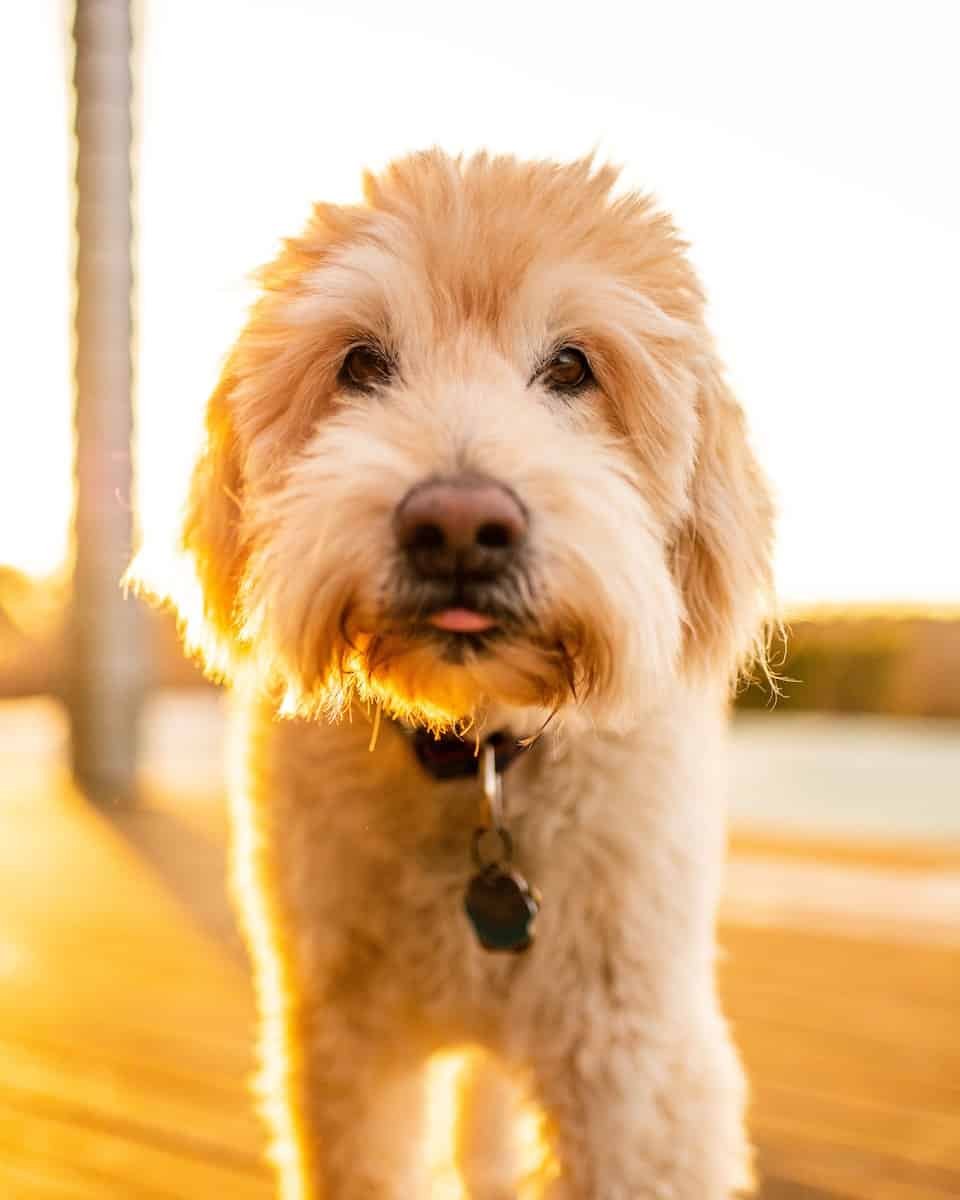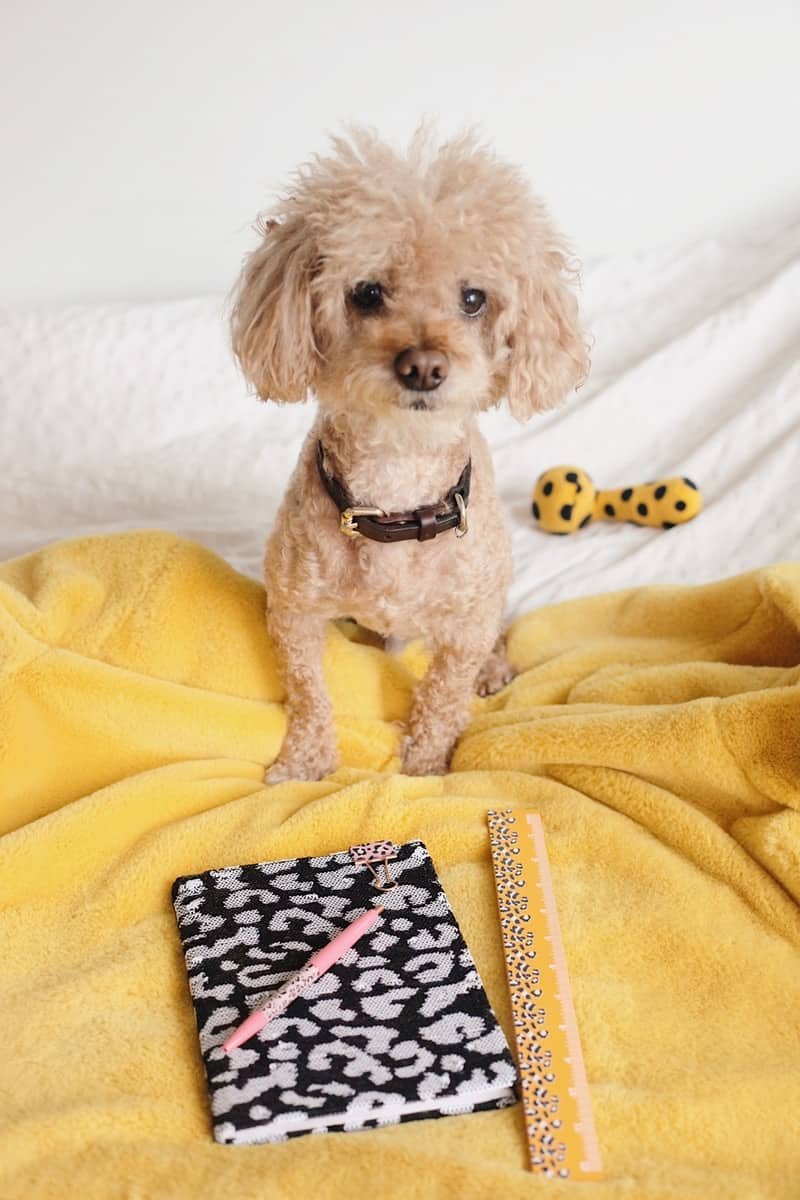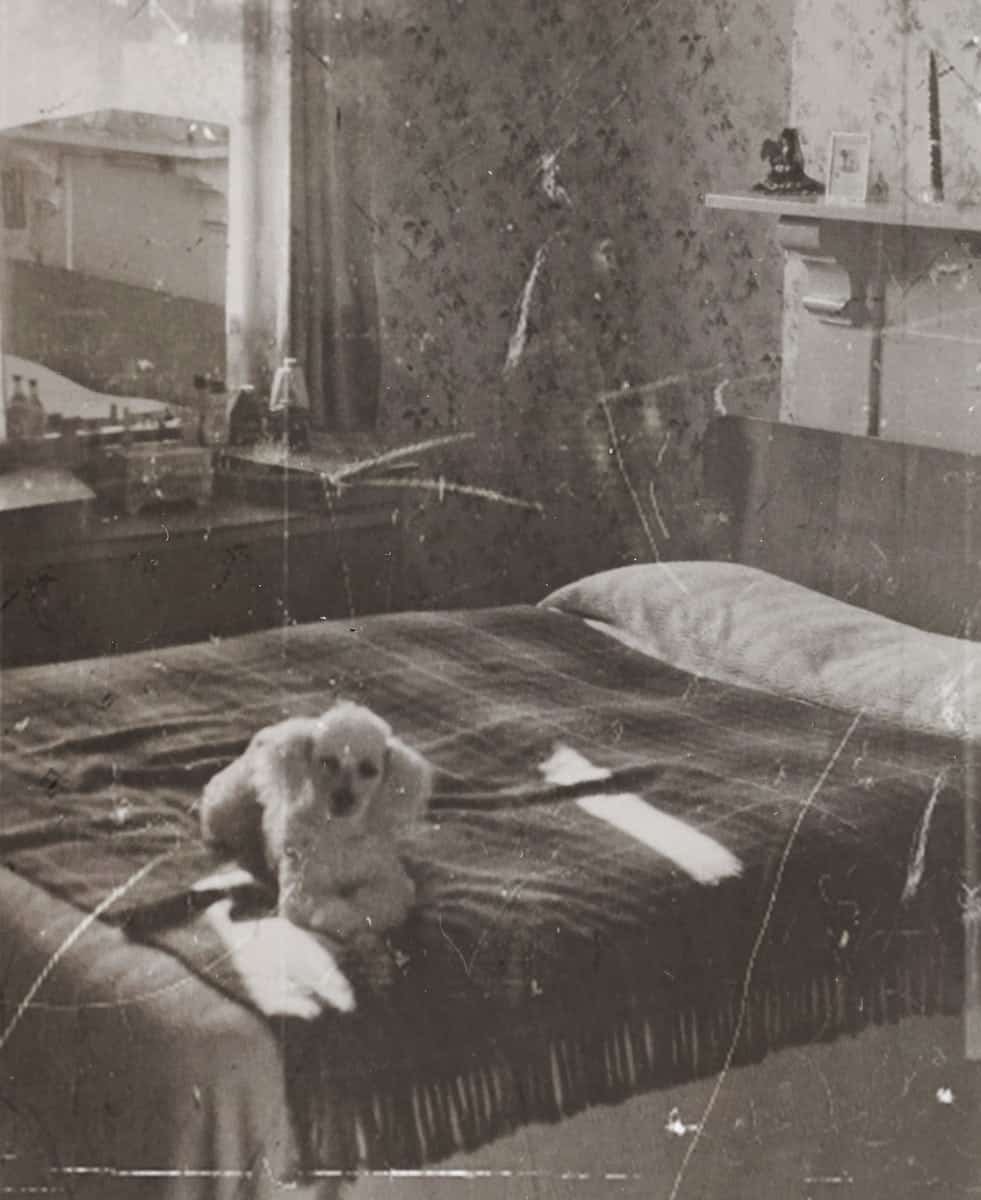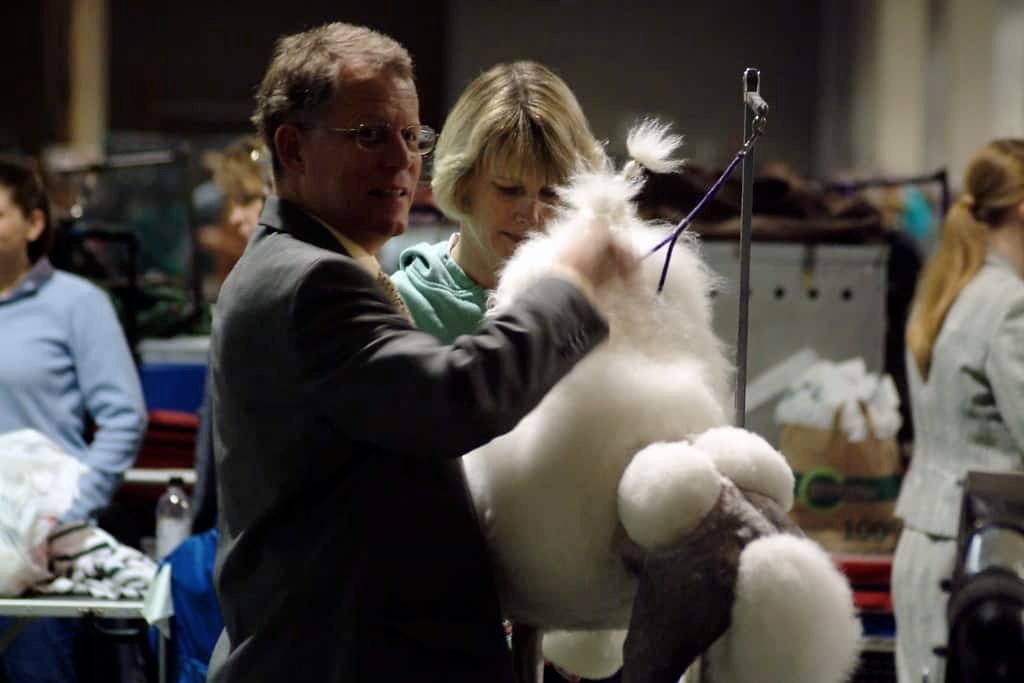Poodles are among the most popular and versatile breeds with a heritage that combines beauty and brains. They come in different sizes—Standard, Miniature, and Toy—each with unique qualities, but all share the hallmark curly coat and keen intelligence. The Standard Poodle is the largest of the trio, known for its grace and athleticism; while the Miniature Poodle offers these elegant traits in a more compact size ideal for smaller living spaces.
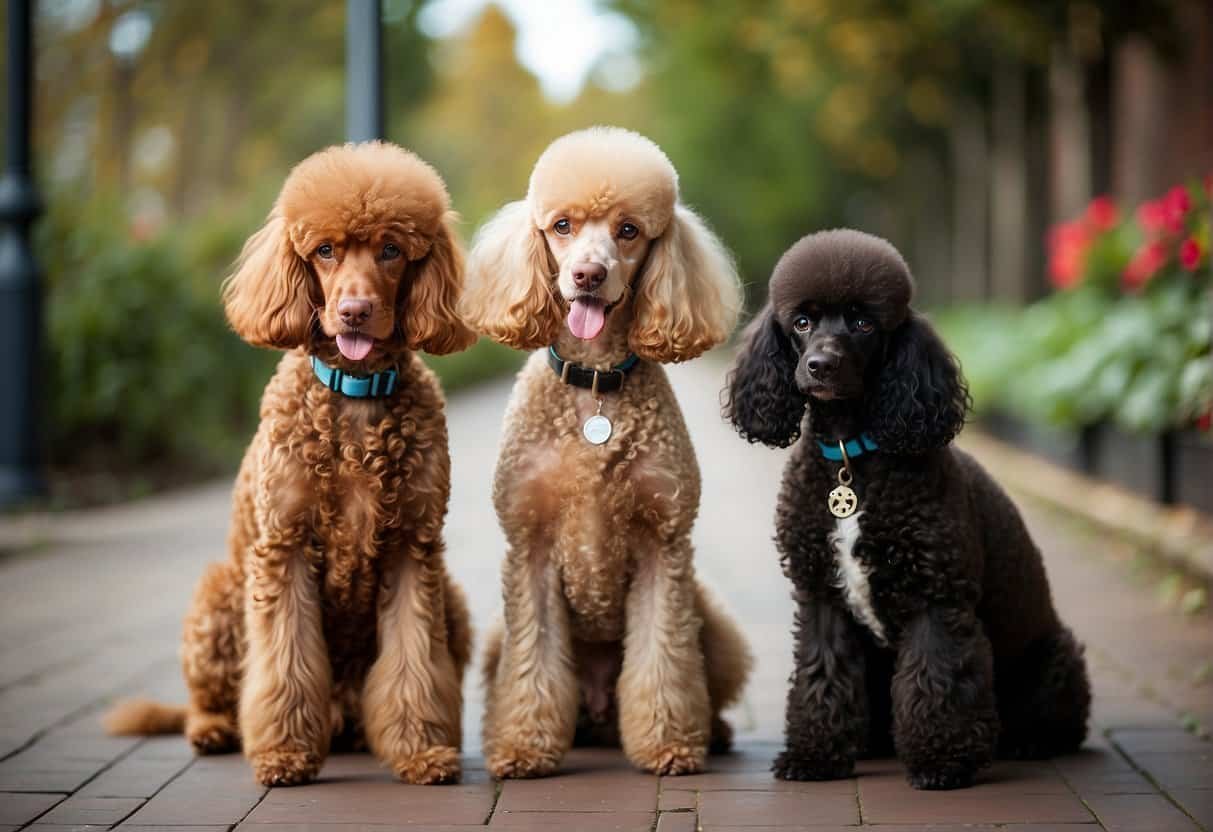
The Toy Poodle, the smallest of the group, is particularly beloved for its adaptability as a companion dog, fitting conveniently into various lifestyles. Despite their size differences, all Poodles are characterized by their hypoallergenic coats, making them a popular option for allergy sufferers. Moreover, these breeds aren’t just about looks; they’re renowned for their sharp minds and agility, excelling in obedience and dog sports, while also being affectionate family members.
Key Takeaways
- Poodles come in three notable sizes: Standard, Miniature, and Toy, each possessing distinct characteristics.
- All poodle types share a hypoallergenic coat and a reputation for high intelligence and versatility.
- Poodles are adaptable, suitable for various living situations, and excel in obedience and agility.
Origin and History of Poodles
Poodles are distinguished by their unique ancestry and the development of various sizes to meet different needs. Their evolution from water retrievers to beloved companions encompasses a rich history.
Poodle Ancestry
Poodles, originally bred in Germany for retrieving waterfowl, are believed to be descended from the older German breed known as the Pudel. Their proficiency in water led them to be recognized for their exceptional swimming abilities. The term “pudel” comes from the Low German verb meaning “to splash,” which is a nod to the breed’s water work. The Poodle may also have some historical connection to the French Barbet, which was known for its woolly coat. Over time, the breed’s reputation for intelligence and versatility made it a favorite amongst the aristocracy across various European countries.
Development of Poodle Varieties
The Standard Poodle is the oldest of the poodle varieties and set the stage for subsequent smaller versions, known for its elegance and agility in retrieving waterfowl. As the breed’s popularity grew, especially among the nobility, smaller poodles were developed to suit a lifestyle less focused on hunting and more on companionship. The Miniature Poodle was bred down from the standard size to assist in truffle hunting and to be a pet for the urban dwellers. Meanwhile, the Toy Poodle was further refined to be a lapdog for the elite, maintaining the breed’s distinctive features on an even smaller scale. These varieties, while sharing a common origin, developed distinct traits and purposes, fulfilling different roles in society throughout history.
Recognizing the Poodle Breeds
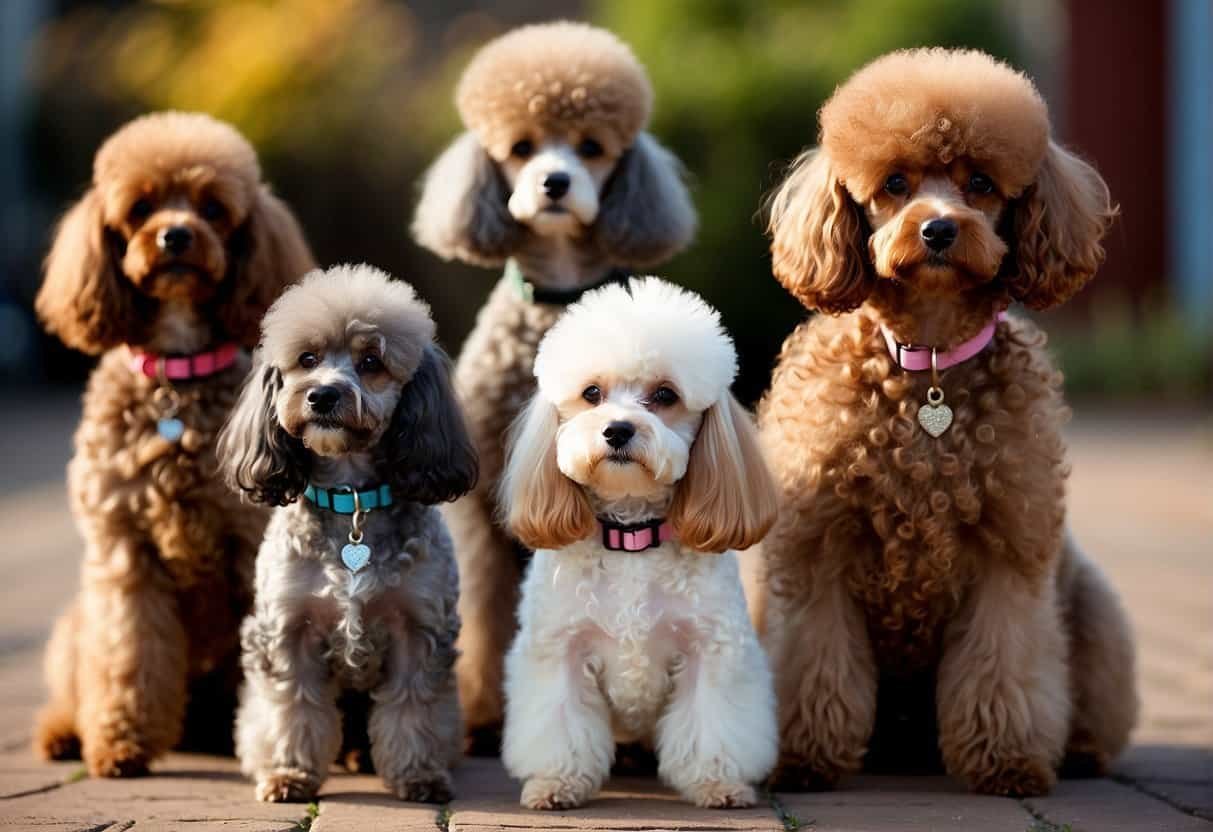
Poodle breeds are distinguished by their size, coat colors, and distinct traits that conform to American Kennel Club standards.
Characteristics of the Standard Poodle
The Standard Poodle stands as the largest of the breed, typically over 15 inches at the shoulder. Recognized by the American Kennel Club, they exhibit a proud posture and an elegant appearance. Their coat is profuse and curly, presenting in colors such as black, white, apricot, and many others. This variety is known for its intelligence and trainability, aligning with the poodle breed’s reputation for sophistication and versatility.
Traits of the Miniature Poodle
A Miniature Poodle is notably smaller than the standard, usually measuring 11 to 15 inches tall. These mid-sized poodles are described by their owners for having as much personality as their larger relatives. Miniature Poodles possess a similar curly coat that can come in a variety of colors and are also recognized by the American Kennel Club. They blend the adaptability of the Standard Poodle with a more compact size suitable for apartment living and are a popular choice for families.
Features of the Toy Poodle
The Toy Poodle holds the stature as the smallest of the breed, normally no more than 10 inches in height. Despite their diminutive size, they share the same curly and hypoallergenic coat as the other poodle breeds, which also comes in multiple colors. Toy Poodles maintain the breed’s signature intelligence and eagerness to please, traits that have kept poodles highly regarded for decades. They are the perfect companions for those looking for all the poodle attributes in a much smaller package.
Poodle Temperament and Behavior
Poodle breeds, encompassing toy, miniature, and standard sizes, exhibit distinct temperaments that are reflective of their high intelligence and sociable nature. These traits make poodles excellent companions with specific behavioral patterns.
Companionship and Sociability
Poodles thrive on companionship and are known for their affectionate and friendly demeanor. As social animals, they prefer to be around their human families and are not well-suited to being left alone for long periods, which can lead to anxiety. This breed’s desire for companionship also makes them less prone to aggressive behavior when well-socialized. Toy Poodles are notably affectionate and love to stay close to their owners, while Standard and Miniature Poodles are friendly and excel in interactions with people and other pets.
Behavioral Traits
With their inherent intelligence and obedience, poodles are one of the easiest breeds to train. Engagement in regular mental and physical stimulation is crucial to maintain their well-being. These breeds display a range of behaviors indicative of their high energy levels and playfulness. For instance, the Standard Poodle shows active behavior and requires more exercise, whereas the Miniature and Toy varieties adapt well to indoor play but still enjoy being active. Their attention-seeking behavior can be addressed through positive reinforcement and consistent training.
Physical Characteristics
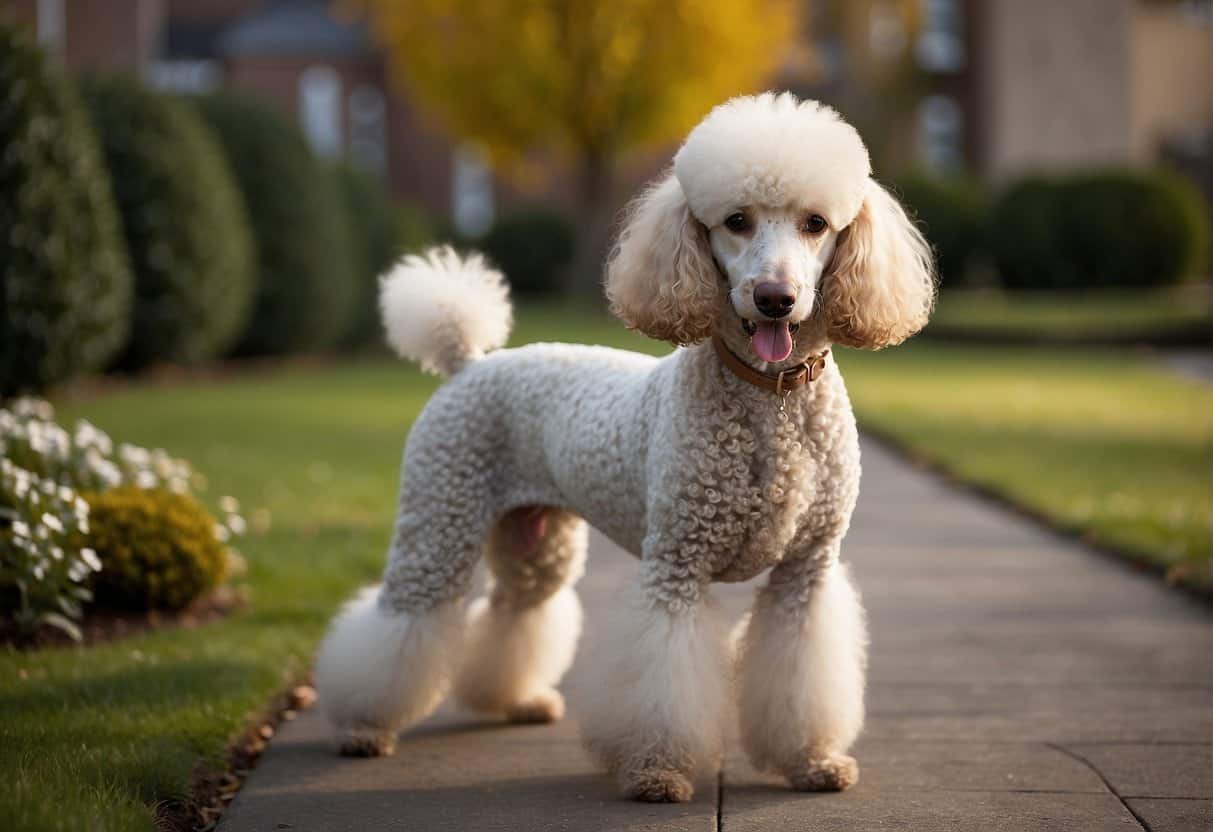
Poodles are distinguished by their intelligent expressions and distinctive, curly coats. They are generally known for their hypoallergenic fur, which is beneficial for people with allergies.
Size and Weight
Standard Poodle:
- Height: Over 15 inches at the shoulder.
- Weight: Generally weighs between 40 to 70 pounds.
Miniature Poodle:
- Height: Between 10 to 15 inches at the shoulder.
- Weight: Typically ranges from 10 to 15 pounds.
Toy Poodle:
- Height: Up to 10 inches at the shoulder.
- Weight: Usually weighs between 4 to 6 pounds.
Coat and Shedding
- Poodle Coat: Can either be curly or corded with a wide range of colors, including black, white, and apricot.
- Shedding: Poodles are known for their minimal shedding, making them a popular choice for people who prefer less dog hair around the home.
- Grooming: Requires regular grooming to maintain their coat’s condition and prevent matting, with professional grooming recommended every 3-6 weeks.
Health and Care

Poodles, regardless of their size—be it toy, miniature, or standard—require attentive healthcare and a well-considered routine to address their unique needs. Here, we’ll discuss the standard approaches to maintaining the well-being of these intelligent and active breeds.
Common Health Problems
Poodles are generally healthy, but like all breeds, they’re prone to certain health conditions. They may suffer from progressive retinal atrophy (PRA), which can lead to blindness, and hip dysplasia, a malformation of the hip joint that can cause pain and arthritis. Patellar luxation, where the kneecap dislocates, and sebaceous adenitis, an inflammatory skin disease, are also seen in some poodles. Additionally, they can be affected by epilepsy and hypothyroidism, which can often be managed with medication.
Nutrition and Diet
A balanced diet tailored to their age, size, and activity level is essential for poodles. They can be susceptible to bloat, a potentially life-threatening condition, so it’s important to divide their daily intake into two or more meals and avoiding vigorous exercise after eating. High-quality dog food that meets the nutritional standards set by the AAFCO is advised, and always ensure that clean, fresh water is available.
Exercise Needs
Poodles are active dogs that require regular exercise to maintain their mental and physical health. Standard poodles need at least an hour of exercise each day, while smaller varieties may require slightly less. Activities should include both physical exercise, like walking or playing fetch, and mental stimulation to keep their intelligent minds engaged. Balance is key, as too much exercise can exacerbate health issues such as hip dysplasia.
Routine grooming is also a crucial part of a poodle’s care, including regular haircuts and brushing to prevent matting. This prevents skin issues and contributes to their overall wellbeing.
Training and Intelligence

Poodles excel in intelligence and are known for their remarkable trainability. They adapt well to various training methods and enjoy mental challenges, which is essential for their well-being.
Trainability
Standard Poodles are renowned for their obedience and trainability. They often excel in dog sports and obedience training due to their eagerness to please and quick learning capabilities. Similarly, Miniature Poodles also exhibit high levels of intelligence, making them highly trainable. They respond well to positive reinforcement techniques. On the smaller end of the spectrum, Toy Poodles may require a patient approach but are just as capable of learning as their larger counterparts. All poodle sizes benefit from consistent training that starts early, focusing on social skills and household rules.
- Obedience Training:
- Standard Poodles: Often the stars of advanced obedience.
- Miniature Poodles: Eager learners, excel in structured training environments.
- Toy Poodles: May require gentler training sessions but can achieve the same levels of obedience as other sizes.
Mental Stimulation Needs
Poodles of all sizes share a need for mental stimulation to stay content. Regular interactive activities and problem-solving games can prevent boredom and promote a sharp, active mind. Standard Poodles might enjoy a rigorous session of agility or complex obedience routines. Miniature Poodles appreciate varied activities such as learning new tricks or simple agility challenges. Toy Poodles thrive with puzzle toys and games that cater to their smaller size but still challenge their intellect.
- Activities for Mental Stimulation:
- Standard Poodles: Agility training, advanced tricks, interactive play.
- Miniature Poodles: Trick training, beginner agility courses, fetch and seek games.
- Toy Poodles: Puzzle toys, hide-and-seek, gentle fetch games.
Both the Standard and Miniature Poodles are social dogs that seek the companionship of their human families and can become quite attached. Adequate mental stimulation strengthens their bond with their owners and enhances their well-adjusted behavior. Meanwhile, Toy Poodles are delightful companions, fun-loving and highly perceptive, benefiting greatly from intellectual engagement with their caregivers.
Poodles in Society
Poodles, known for their intelligence and versatility, have found their place in various social roles ranging from family companions to performers in entertainment.
Poodles as Family and Service Dogs
Poodles have secured their reputation as excellent family dogs due to their affectionate nature and high trainability. Families often choose Standard Poodles for their size and gentle demeanor, while the smaller Miniature and Toy Poodles are favored for their adaptability to smaller living spaces. Their hypoallergenic coats make them particularly suitable for households with allergy concerns. Moreover, Poodles are frequently used as service dogs; their astuteness and responsiveness make them ideal for offering support and assistance to individuals with disabilities. The rise of hybrid breeds such as the Goldendoodle and Labradoodle are testament to the Poodle’s continued popularity as a versatile family dog that combines the traits of Poodles with those of other breeds like the Golden Retriever and the Labrador Retriever. These crosses often inherit the Poodle’s intelligence and hypoallergenic coat, along with the friendly nature of the other parent breed.
Poodles in Sports and Entertainment
In the realm of dog sports, Poodles shine as capable athletes. Often participating in competitions that test agility and obedience, Poodles excel due to their high energy levels and eagerness to please. The Moyen, or Klein Poodle, is particularly athletic and can be a strong competitor in dog sports. Poodles have a storied history in duck hunting as well; their strong swimming ability and keen retrieving instincts make them natural hunting dogs, especially Standard Poodles, which were originally bred for this purpose. In entertainment, Poodles often appear in circuses and shows due to their trainability and elegant demeanor, captivating audiences with elaborate tricks and performances. Whether it is providing companionship as a loyal family pet or showcasing their agility in competitive sports, Poodles continue to be one of the most popular and esteemed dog breeds in society.
Frequently Asked Questions
Poodles are diversified into distinct sizes and possess unique traits. This section responds to common inquiries regarding their size variation, growth, behavior, and breed-specific traits.
What distinguishes the various sizes of Poodles from each other?
The main difference between the various sizes of Poodles lies in their height and weight. Standard Poodles are the largest, typically over 15 inches tall at the shoulder, while Miniature Poodles stand between 10 to 15 inches. Toy Poodles are the smallest, usually no more than 10 inches tall.
How does the temperament of a Standard Poodle differ from that of Toy and Miniature Poodles?
Standard Poodles are known for their intelligence and calm disposition. Toy and Miniature Poodles share this intelligent trait but may exhibit more energetic and sensitive behaviors, with Toy Poodles developing particularly strong bonds with their owners.
What are the common health issues associated with Miniature Poodles?
Miniature Poodles are susceptible to a variety of health issues including hip dysplasia, epilepsy, and progressive retinal atrophy. Regular health screenings are important for this size category to manage and prevent potential problems.
At what age is a Miniature Poodle considered fully grown?
A Miniature Poodle is generally considered fully grown at around 12 to 14 months of age, although some may continue to fill out in weight and coat until they reach about 18 months.
What is the average size and weight of a Toy Poodle?
A Toy Poodle typically weighs between 4 to 6 pounds and stands about 10 inches or less at the shoulder. However, individual weight can vary based on diet, exercise, and overall health.
What are the distinguishing traits of Poodles as a breed?
Poodles, irrespective of their size, are highly intelligent and trainable. They are characterized by their curly, hypoallergenic coats and their active, graceful posture. Poodles are also known for being good family dogs that are fun, energetic, and social.

